Lumina aims to raise $20-40 million in Series A funding for electric construction equipment

US-based Lumina, a company specializing in electric construction equipment, is aiming to raise between $20 million and $40 million in its Series A financing round, according to Axios. Lumina was founded in 2021 by entrepreneur Ahmed Shubber and aims to release a 32-ton autonomous and electric bulldozer prototype, the Moonlander. The prototype is similar to the size of a Caterpillar D6 while delivering the load capacity of the larger D9 model. Shubber has ambitious plans for Lumina, including a target of $100 million in revenue within two years of starting operations. Lumina’s business strategy is based on not only selling its bulldozers but operating them directly at construction sites, allowing it to maintain full control over the deployment of its equipment. The company also plans to develop a 100-ton electric excavator, Blade Runner, which will also feature advanced autonomous operating technology. Source: Axios
Siemens to open data center hub in Spain for digital development

Siemens Smart Infrastructure is to open a data center technology hub in the Iberian region, strengthening its commitment to the development of sustainable, resilient, and efficient digital infrastructure. This development reinforces Spain’s role as a strategic digital gateway to southern Europe, amid strong sector growth. Siemens to establish a data center hub in Madrid. The move comes amid an unprecedented expansion of the Spanish data center market, which is projected to grow at a compound annual rate of over 20%. Morgan Stanley estimates that the number of data centers in Europe will increase fivefold over the next decade, with Spain emerging as a key destination. Thanks to its strategic location, strong connectivity, and abundant renewable energy resources, Spain is an attractive alternative, able to offer much-needed capacity relief for overwhelmed traditional (FLAP-D) markets. In its latest Report on the State of the Data Center Sector 2024, Spain DC forecasts that Spain could attract up to €13 billion in investment over the coming years, even in its most conservative scenario. According to the International Energy Agency (IEA), global data center energy consumption reached 415 TWh in 2024 and is projected to more than double to 945 TWh by 2030. Siemens’ new Iberian hub will support this rapidly evolving sector with innovative solutions to optimize efficiency and reduce resource consumption. By combining the real and digital worlds with its design and simulation technologies, Siemens enables the sustainable transformation of data center infrastructure, creating customized solutions that meet customers’ specific needs. Building on the successful launch of its Nordic data center hub, Siemens’ expansion to Madrid now reinforces its commitment to supporting Iberia’s goal of establishing itself as a leading digital hub in southern Europe. The move will drive regional economic growth, create skilled jobs, and advance the development of digital infrastructure aligned with the objectives of the European Green Deal. The expert team in Madrid will provide comprehensive support for power solutions, infrastructure management, automation, digital twins, thermal optimization, fire safety, physical security, microgrids, as well as lifecycle and financial services. With an end-to-end portfolio and a strong ecosystem of partners, Siemens is well positioned to support the data center industry. By scaling capacity, driving innovation, and offering global expertise, Siemens delivers full lifecycle support to help data centers plan, build, operate, and scale effectively. For more information, visit siemens.com. The post Siemens to open data center hub in Spain for digital development appeared first on Engineering.com.
All the EVs you can buy with 0% interest financing in June 2025

The world seems awfully tinderbox-y these days, what with a heat dome descending over the US, the Strait of Hormuz getting locked down, and gas prices set to climb on rising oil prices. As such, it might be a good time to buy that slick new EV you’ve had your eye on. If that sounds like you, you’re in luck! There are a bunch of great plug-in cars you can buy with 0% financing in June, 2025! more…
GÖPEL electronic launches 500 kW EV battery test bench with regenerative power and BMS interface

GÖPEL electronic has introduced a modular, high-voltage battery test bench designed for safety and functional testing of EV battery packs. Developed for use in automotive development and production environments, the system is intended to support fast and cost-efficient quality assurance of battery cells and packs. The test bench delivers up to 500 kW of power and supports test voltages up to 1,000 V DC and currents up to 800 A DC. It includes a central measurement unit with integrated computer and display, a control cabinet, and a unit for power electronics, all of which can be configured to meet specific testing needs. The platform also features regenerative energy capability, enabling energy recovered during discharge cycles to be fed back into the grid, improving overall energy efficiency. Key functions include insulation testing up to 7.5 kV, evaluation of AC impedance, cell dynamics under alternating current, and detection of critical defects. According to the company, test results provide insights into electrochemical processes, cell aging and internal resistance across frequency ranges. The system interfaces with a battery management system (BMS) via CAN-BUS and performs a charging/discharging cycle followed by state-of-charge verification. Final test data are automatically exported to a production database and presented in customizable reports. The system also verifies quiescent current, confirms the battery’s final charge state, compares sensor and error memory data, and performs the final flashing of customer software onto the battery before delivery. Source: GÖPEL electronic
The unrealized promise of circular diapers

Disposable diapers epitomize the excesses of the industrial, linear economy. After one nasty, short life, diapers trap organic matter in layers of plastics and paper pulp for hundreds of years in a landfill. Efforts to change that have barely progressed in four decades, from Procter & Gamble’s groundless compostability claims in the early 1990s through the launch of countless “eco-friendly” personal care startups in recent years. At least 90 percent of diapers in the developed world are single-use, bringing staggering levels of pollution. Each requires a cup of crude oil to produce. Every minute, 300,000 diapers go to the trash globally. And each American uses thousands of diapers in a lifetime, from the cradle to Depends. In a market littered with companies pitching earth-friendly versions, Hiro Technologies became the latest in April, offering “mycodigestible” diapers that self-destruct with help from a hungry fungus packet. “Our goal is to have diapers be circular, whether that is compostable, recycled or a combination thereof — or something new,” said Bart Jansen, lead product developer in sustainability at Ontex Global, a Belgian diaper maker with more than $2 billion in revenue and 5,500 employees. “We need to stop being in this linear model: We make products, you use them, you take them, you dispose of them, and they’re gone. There needs to be an alternative for that.” Room for improvement The botched 1991 attempt by the world’s biggest diaper maker, P&G, became a greenwashing case study that informed the Federal Trade Commission’s early “green guides” for marketers. Ten state attorneys general sued over an ad for Pampers and Luvs that showed a hand spilling over with black soil, declaring, “Ninety days ago this was a disposable diaper.” P&G settled for only $50,000. Just a year earlier, it had announced a $20 million fund to engineer compostable diapers. In 1989, it had explored downcycling diapers into garbage bags and insulation for buildings. A 1991 ad that landed Procter & Gamble in trouble. Credit: eBay Momentum to break the poop-and-toss cycle petered out for decades, at least publicly. But since 2017, P&G has backed an industrial diaper recycling plant in a joint venture in Italy that processes roughly 10,000 metric tons of waste each year. The facility separates the materials, recycling plastic to make bottle tops and cellulose for furniture. Alas, 10,000 metric tons is less than 1 percent of the weight of P&G’s Pampers brand of diapers sold each year. And Huggies parent Kimberly-Clark, the No. 2 diaper maker, has not done much to scale circular diapers, either, beyond small projects like Nappy Loop composting in Australia. Meanwhile, the disposable diaper space is set to grow from $79 billion in 2025 to $115 billion by 2030, according to Grand View Research. And the market for biodegradable diapers, in particular, is expected to double from $4 billion last year to $8 billion in 2033, according to IMARC Group. The definition of “biodegradable” is loose here, however, describing natural fibers such as bamboo and cotton. In theory, such materials degrade in nature. How they behave when composted is another matter — and ripe for greenwashing. Numerous startups have attempted to fill the innovation gap left by P&G and Kimberly-Clark, which corner three quarters of the baby diaper market. Here’s a tour of some of the most promising: Fungus forward: Hiro Technologies Why can’t diapers mimic the pattern in nature, whereby decomposers eat waste and release nutrients? That’s what serial entrepreneur Miki Agrawal is pursuing with diaper startup Hiro Technologies. “We’re the first company to actually take plastic-eating fungi out of a lab and into a product,” she said. Her team in Austin, Texas, grows fungi to create a shelf-stable, matchbook-size packet that “eats” used diapers. Parents take a spent diaper, pop in the fungus square and toss it all into the trash. In test conditions, the fungus transforms the diaper into compost within a year, according to the company. Its diapers feature 80 percent unbleached cotton and wood pulp, plus 20 percent polypropylene and polyethylene. The plastic is necessary for performance, according to Agrawal. However, she wants to replace it eventually with a bio-based polymer. Hiro is angel-funded, including backers of Agrawal’s previous startups, the bidet brand Tushy and the period underpant maker Thinx (bought by Kimberly-Clark in 2023). Hiro Technologies’ near-term goal is for 10,000 customers to subscribe to diaper deliveries for about $140 per month. It’s pursuing third-party validations for compostability, biodegradability and nontoxic materials. Agrawal’s son, Hiro, inspired the idea for the company as a toddler. “One day, we’re outside looking at trees, and I was like, Breast milk is liquid gold; you can’t waste a drop,” she said. “And so baby poop must be fertilizer gold. But right now we’re wrapping up this potent fertilizer in plastic and just throwing it away in the trash, billions of pounds … and not harnessing it for good.” Hiro diapers, however, are not designed to transform into commercial compost. Most likely, they end up in landfills. Grounded in composting: Dyper, Terracycle Most composting facilities refuse dirty diapers, no matter what their material. But some startups are nonetheless pursuing a back-to-nature strategy by marketing their diapers as compostable or biodegradable. Dyper of Scottsdale, Arizona, for example, ships a monthly $100 box of plant-based diapers directly to consumers. For another $65, customers in select regions can leave a plant-based plastic bag packed with dirty diapers on their doorstep for weekly pickups. The Trenton, New Jersey, company Terracycle provides industrial composting through its Redyper service to create compost in several months. The composting sites, whose locations remain undisclosed by both companies, would require specific permits to handle human waste, which most composting facilities reject as a biohazard. Compost involving transformed human waste often winds up in landscaping. gDiapers for the Greater Good Project The regulatory hurdles of diaper composting in the developed world recently led longtime wife-and-husband diaper entrepreneurs to pivot. For two decades, Australians Kim and Jason Graham-Nye sold gDiapers. These colorful cotton-spandex diaper bloomers held maxipad-like inserts made of
KCI launches SoundScanNX for noise analysis

KCI Technologies Inc., an engineering, consulting, and construction firm with offices across the United States, has announced the availability of SoundScanNX, a machine learning model designed to support environmental noise classification and help engineers and urban planners assess traffic-related sound impacts. SoundScanNX is designed to improve the efficiency and consistency of traffic noise impact studies by automating the classification of audio recordings. The AI-based model distinguishes between traffic and non-traffic sounds—such as vehicles, airplanes, voices, and birds—removing the need for manual listening. It identifies the dominant sound in each file, along with peak and average amplitudes. Available on the BRYX Model-as-a-Service (MaaS) cloud platform, SoundScanNX enables users to upload, process, and access results quickly and easily. SoundScanNX automatically identifies and classifies the dominant sound in each audio file. Designed for integration into urban planning workflows, SoundScanNX simplifies data management, helping professionals reduce inefficiencies and make informed decisions for sustainable urban development. For more information, visit kci.com. The post KCI launches SoundScanNX for noise analysis appeared first on Engineering.com.
EcoFlow early Prime Day Sale takes up to 60% off power stations, Lectric e-bike bundles up to $703 off in 4th of July Sale, more
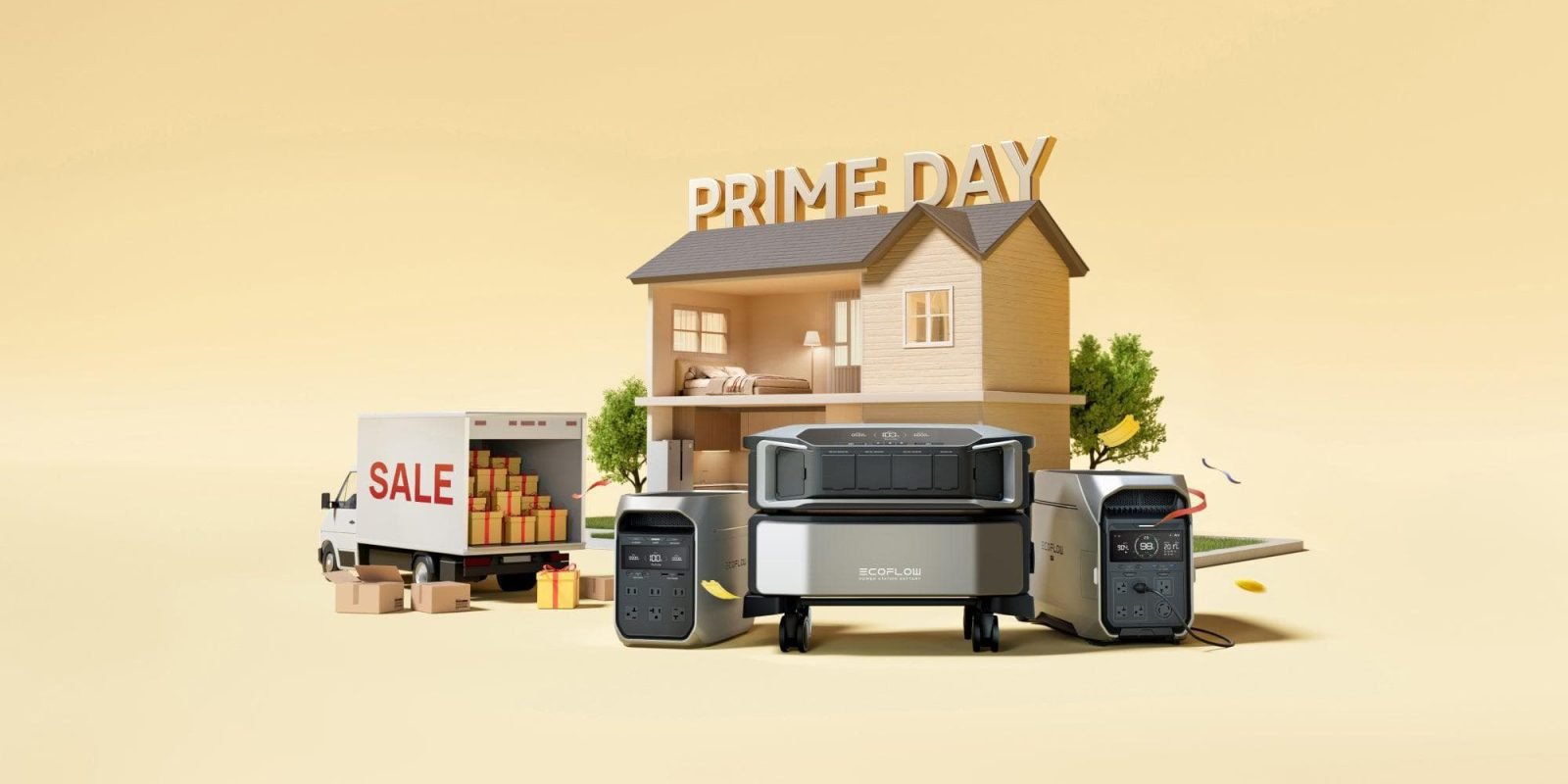
We’re starting this week’s Green Deals off strong, as today’s edition is headlined by EcoFlow’s newly launched early Prime Day Sale with 60% discounts, bonus savings, free gear, subsidies, and more. Among the lineup, we spotted the DELTA 2 Solar Generator bundle with a smart extra battery and two 110W panels at a new $997 low. Right behind it is Lectric’s 4th of July Sale, which is taking up to $703 off its e-bike bundles, including continued savings on the new XP4 e-bikes that start from $999 with up to $356 in free gear. We also have a spotlight on Rad Power’s RadCity 5 Plus Commuter e-bike in its gorgeous burgundy red colorway at $1,499 through June 25. Lastly, we have two electric lawn care solutions at their best rates to date, with the Worx 20V 5-inch Cordless Mini Chainsaw at $84, while the Greenworks 82V Commercial 760 CFM Cordless Axial Leaf Blower comes with two Bluetooth 4.0Ah batteries and a dual-port rapid charger for $300. Plus, there’s all the rest of the hangover Green Deals from last week in the links at the bottom of the page, collected together in our Electrified Weekly roundup. Head below for other New Green Deals we’ve found today and, of course, Electrek’s best EV buying and leasing deals. Also, check out the new Electrek Tesla Shop for the best deals on Tesla accessories. more…
Bio-based heat shrink tubing materials for next generation sealing and protection

Sponsored by TE Connectivity. Due to the rising global demand for sustainable chemicals, the bio-based polymer market is anticipated to expand substantially in the future, based on industry forecasts. The primary driving force behind the development of bio-based polymers is their use of renewable, plant-based content which is critical given the public’s concern on the use of fossil fuels. Significant advancements in the method for refining biomass raw materials towards the creation of bio-based construction materials and products are driving this rise. Are you ready to revolutionize your approach to electronic component protection? Discover the groundbreaking advancements in bio-based heat shrink tubing materials that are setting new standards in sustainability and performance. Our exclusive whitepaper delves into the latest innovations and market trends, providing you with the insights needed to stay ahead in the industry. Here’s what you’ll learn: Market Dynamics: Understand the driving forces behind the growth of bio-based polymers and their impact on the industry Scientific Innovations: Explore the latest advancements in polymer chemistry and the development of bio-based materials Environmental Impact: Learn how bio-based polymers reduce greenhouse gas emissions and reliance on fossil fuels Application Benefits: Discover the versatility, durability, and safety features of bio-based heat shrink tubing in various applications.
3D printed building material actively removes CO2 from the air

Climate change is a complicated problem that requires complicated solutions. Whether we’re talking about reducing our current output of greenhouse gas emissions or finding ways to recapture greenhouse gases, the methods and technologies required to do so push the limits of human innovation. The latest example of this comes from ETH Zurich, where an interdisciplinary research team has been working on combining conventional building materials with living organisms, such as bacteria, algae, and fungi. Now, led by Mark Tibbitt, professor of macromolecular engineering, the researches have successfully incorporated cyanobacteria into a printable hydrogel to create a material that lives, grows, and actively removes carbon dioxide from the air. Requiring only sunlight and artificial seawater containing essential nutrients, the material is capable of absorbing more CO2 than it binds through organic growth. “This is because the material can store carbon not only in biomass, but also in the form of minerals – a special property of these cyanobacteria,” Tibbitt explained in a press release. “As a building material, it could help to store CO2 directly in buildings in the future.” In addition to generating biomass, the cyanobacteria used in the study change the chemical environment around themselves, precipitating solid carbonates, such as lime. These minerals represent an additional carbon sink and – in contrast to biomass – store CO2 in a more stable form. As an added bonus, the carbonates also provide mechanical reinforcement, resulting in the structures slowly hardening over time. Incubation chambers allow cyanobacteria to multiply in freshly printed structures. IMAGE: Clayton Lee According to the researchers, laboratory testing of the material showed that it continuously bound CO2 over a period of 400 days at a rate of 26 milligrams of CO2 per gram of material, more than three times the rate of chemical mineralization in recycled concrete (which is around 7 milligrams CO2 per gram). More than a method for prototyping, 3D printing was essential in this application due to the need to produce optimized geometries to increase light penetration, surface aera, and the flow of nutrients. “In this way, we created structures that enable light penetration and passively distribute nutrient fluid throughout the body by capillary forces,” said Dalia Dranseike, a member of Tibbit’s team and co-first author on the published research. The 3D printed designs have enabled the cyanobacteria to live productively for more than a year, according to the researchers. While it may one day be possible to build entire structures using this material, the next step, according to Tibbitt, is to apply it as a coating on building facades. As a proof-of-concept, two installations have been created with the material at the Architecture Biennale in Venice and the Triennale di Milano in Milan. The research is published in the journal Nature Communications. The post 3D printed building material actively removes CO2 from the air appeared first on Engineering.com.
Urban Arrow’s new FamilyNext Pro e-bike is here to finally replace your second car
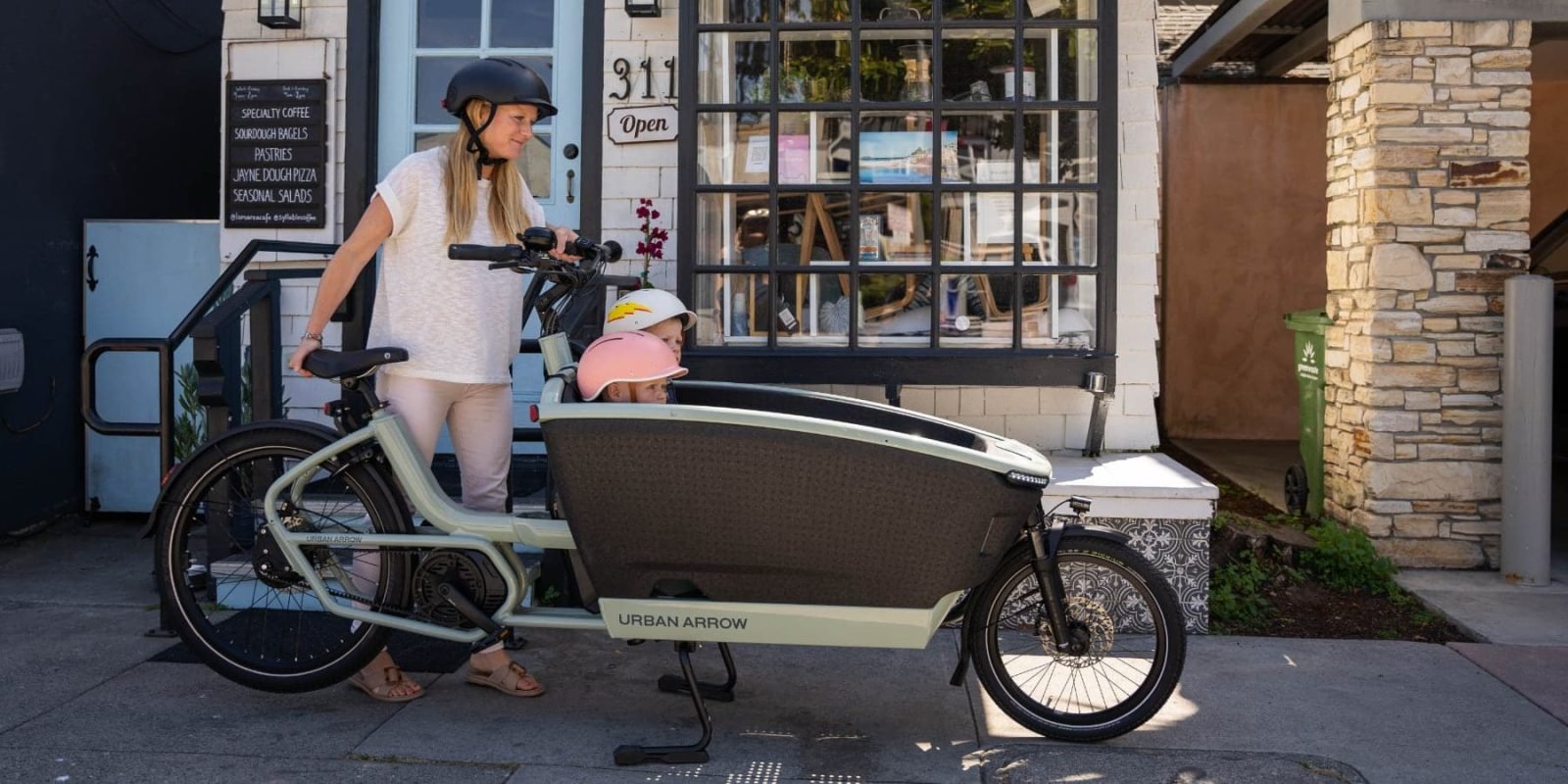
If you’ve ever thought, “I could totally ditch the second car if I just had the right e-bike,” then Urban Arrow may have just dropped your dream machine. The Dutch cargo bike powerhouse has launched its newest model, the FamilyNext Pro, in North America – and it’s easily one of the most impressive family-focused electric bikes I’ve seen hit the market. more…
SpiroxLTS enables imaging of laser-modified TGV structures
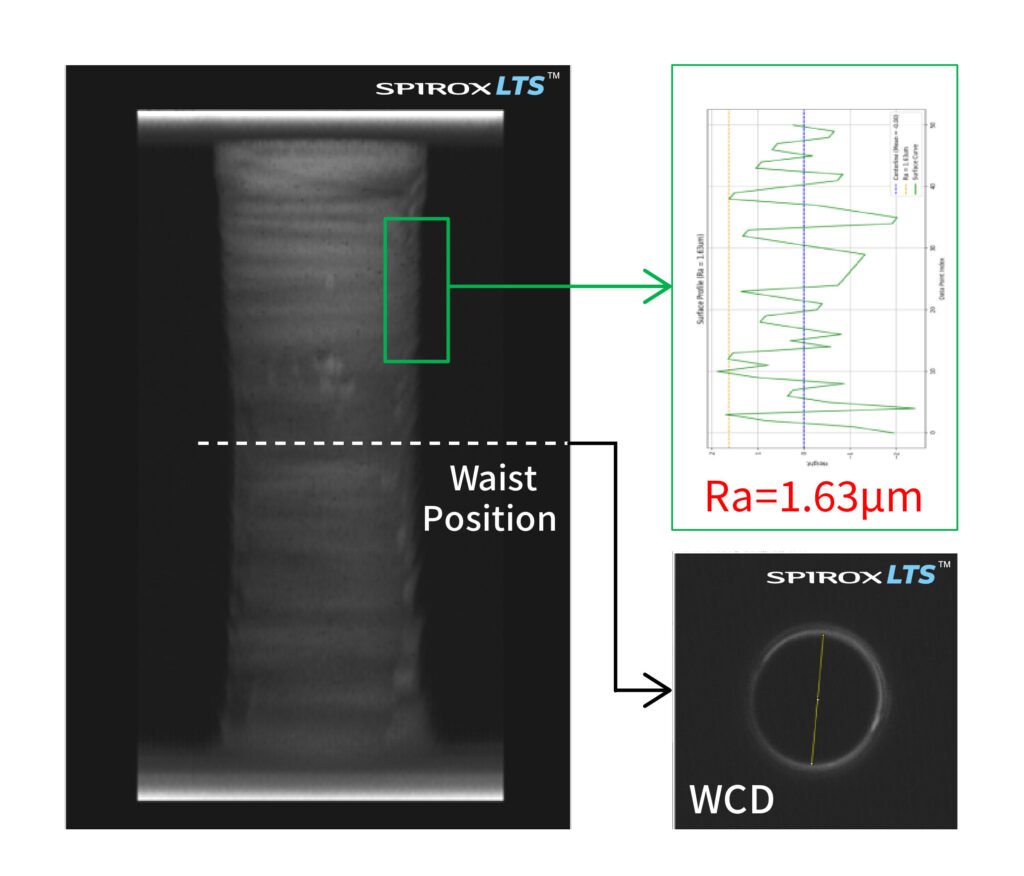
Spirox Corporation, a semiconductor equipment provider, has introduced SpiroxLTS (Spirox Laser Tomography Scanning) technology. This new system uses a combination of patented nonlinear optical integration methods to enable non-destructive, contact-free imaging of laser-modified cross-sections within through glass vias (TGV). SpiroxLTS allows for detailed visualization of modification continuity and uniformity in glass, supporting process quality checks and providing data to help optimize TGV fabrication parameters and production efficiency. As high-performance computing (HPC), high-frequency communications, AI accelerators, and high-performance servers continue to evolve, through glass via (TGV) technology is increasingly used in advanced packaging. TGV provides a low dielectric constant, thermal stability, and supports high-density I/O integration, making it suitable for glass core substrates and 2.5D/3D interposer architectures. Demand for TGV is growing, but monitoring laser modification quality during early processing stages remains difficult. This presents challenges for managing yield and controlling costs, particularly when switching between different glass types. Spirox SP8000G provides morphology and dimensional inspection after etching Hi-Nano Optoelectronics, which has experience in TGV laser process materials and technology development, recognizes the potential of SpiroxLTS to support data-informed and visual laser processing. The company sees it as a useful platform for materials research and process optimization. Hi-Nano and Spirox’s complementary areas of focus may support future collaboration in development and production. SpiroxLTS technology provides a way to visualize laser-modified layers within glass, supporting the development of glass core products. It replaces traditional destructive inspection methods with a non-destructive approach, helping manufacturers reduce development time and better assess modification consistency. Spirox SP8000G enables observation of the modified beam profile and inspection of uniformity across vertical depth variations prior to etching According to manufacturers involved in metallization and build-up processes for TGV packaging substrates, back-end production stages require precise via structures and consistent laser modification. Previously, limited inspection data made it difficult to detect issues early in the process. SpiroxLTS, verified through testing, offers non-destructive inspection capabilities that allow quality checks to begin during materials verification and process validation. This approach supports more consistent production of TGV substrates used in advanced packaging. For more information, visit spirox.com.tw. The post SpiroxLTS enables imaging of laser-modified TGV structures appeared first on Engineering.com.
Mumbai wants thousands of electric ferries, and they’re starting with these flying boats

Politicians in Maharashtra hope to build the world’s largest electric mass transit system on the coastal metropolis’ waterways. It’s all starting now with a recent order of 11 of Swedish boat maker Candela’s P-12 electric ferries, often referred to as ‘flying boats’ due to the way their hydrofoils lift the hulls out of the water for faster speeds and better efficiencies. more…
Segway ZT3 Pro smart all-terrain e-scooter at $915 (Save $385), Anker SOLIX C300 DC power station $160, Greenworks, DEWALT, more
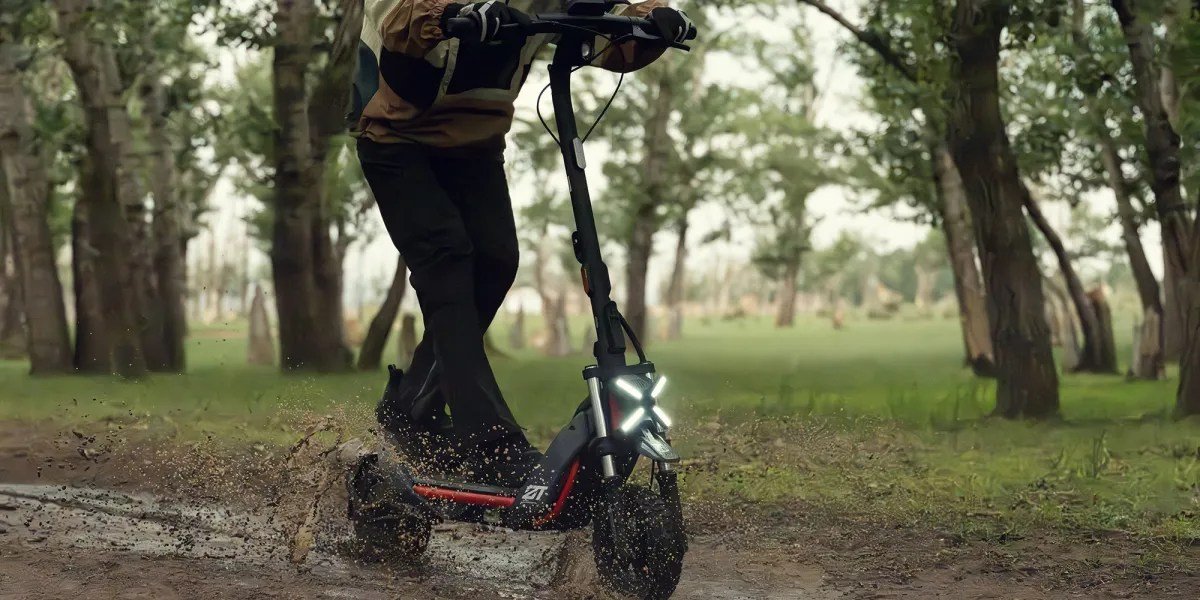
Leading today’s Green Deals is the best post-launch pricing we’ve seen on the Segway ZT3 Pro eKickScooter with smart features like Apple Find My, proximity locking, and more, down at $915. Right behind it, we have Anker’s SOLIX C300 DC 90,000mAh Portable Power Station undercutting the brand’s current sale pricing at $170, as well as its AC and bundle variants. There are also two Greenworks deals today, the first being on the brand’s 24V 12-inch Cordless Compact Chainsaw for $130, while the 40V 25-inch Cordless Self-Propelled Lawn Mower is coming along with two 4.0Ah batteries and a dual-port rapid charger at $525. Lastly, for folks who rely on DEWALT tools, you can score the brand’s 20V Max 4-Port Rapid Charger at $168. Plus, there’s all the rest of the hangover Green Deals in the links at the bottom of the page, like yesterday’s extended EcoFlow Father’s Day Sale offers, the new exclusive low price we secured on the Bluetti AC180P power station, and more. Head below for other New Green Deals we’ve found today and, of course, Electrek’s best EV buying and leasing deals. Also, check out the new Electrek Tesla Shop for the best deals on Tesla accessories. more…
New GM patent leaks plans for drone assisted towing

Like manual transmission shifting, the ability back a tow hitch under a trailer coupler seems to be a skill that younger generations have given up on – but that doesn’t mean they don’t want to haul their bikes, boats, or RVs out into the wilderness. Now, a new patent reveals GM’s plans to make hooking a trailer to your vehicle even easier, with a drone. more…
Hiboy EX6F folding e-bike launch from $950 ($580+ off), Exclusive $2,800 savings on Mango Power E 3,500Wh CATL station, more
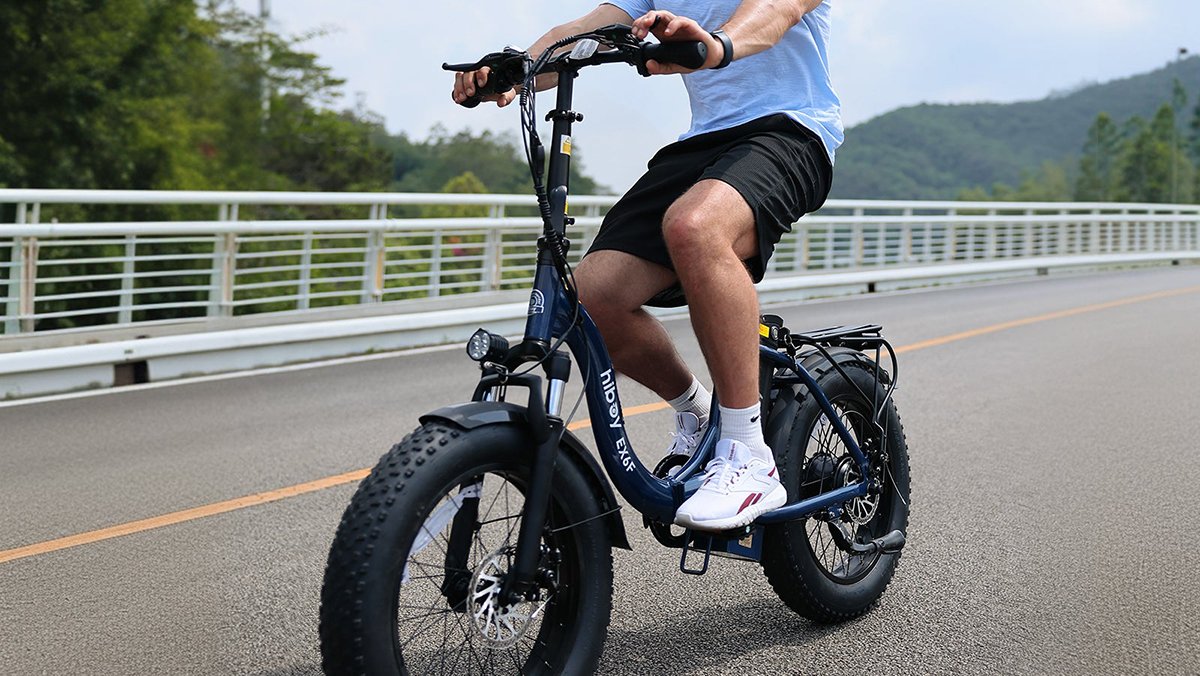
Today’s Green Deals are headlined by Hiboy’s sixth anniversary, which is not only having a sale across its EVs at up to 55% off, but is also giving us the first launch savings on its new EX6F Low-Step Folding e-bike that starts from $950 with two different savings options. We also have an exclusive $2,800 in savings that we’ve secured for our readers on the Mango Power E 3,500Wh CATL Power Station at $999. From there, we spotted two prime-choice mower deals, with the first being ECOVACS’ Goat O1000 RTK robot mower back at its $850 low, while the Worx Nitro 40V 21-inch Cordless Intellicut Mower has fallen to a new $289 low. Plus, there’s all the rest of the hangover Green Deals in the links at the bottom of the page, like yesterday’s Segway ZT3 Pro eKickScooter discount, or the savings we saw on Anker’s SOLIX C300/C200 power stations, and more. Head below for other New Green Deals we’ve found today and, of course, Electrek’s best EV buying and leasing deals. Also, check out the new Electrek Tesla Shop for the best deals on Tesla accessories. more…
Turntide expands range of Gen 6 inverters, adds new partner

Electric motor supplier Turntide Technologies has expanded its Gen 6 Inverter range, which offers high performance and flexibility in a compact form factor. The company has also added EVR Motors as a Turntide Turnkey Solutions partner in order to offer integrated, end-to-end systems for OEMs. Turntide Gen 6 inverters deliver high power density and high-voltage performance ranging from 48 V, 450 A up to 80 V, 700 A. The power and form factor allow a motor to operate efficiently across a wide range of voltages and currents, minimizing energy loss, optimizing vehicle and machine performance and extending battery range. Applications include two- and three-wheel vehicles, material handling equipment and any low-voltage electrification needs. EVR’s TS-RFPM motor technology enables compact and light motors that can be tailored to user requirements. EVR’s lineup of motors, from 6 kW to 150 kW, complements Turntide’s next-generation inverters. Multiple customers are using or evaluating the combined solutions from Turntide and EVR Motors, including OEMs in Japan and North America. For instance, RISE Robotics has developed its Beltdraulic System for industrial and off-highway applications. The system combines EVR’s compact, high-efficiency 160 mm radial flux motor with Turntide’s Gen 6, Size 4 48 V inverter—offering a scalable electric alternative to traditional hydraulics. By leveraging the compact motor’s high torque density, RISE has eliminated the need for a gearbox, reducing weight and system cost. US-based electric dirt bike manufacturer DUST Moto has integrated Turntide’s Gen 6 80 V inverter with EVR’s 185 mm air-cooled motor to enable its DUST Moto bikes to reach up to 30 kW of peak power, delivering high speed and torque in demanding off-road environments. “In today’s competitive market, OEMs can’t afford delays. The faster they can launch, the faster they can lead,” said Ryan Grodzki, VP, Strategic Partnerships, Turntide. “We are enabling OEMs to seamlessly complete electrification systems to bring efficient products to market more quickly.” Source: Turntide Technologies
Your secret weapon against summer heat: home solar power + battery

A record-breaking heat dome over the central United States is sending temperatures – and cooling bills! – soaring into triple digit territory. Luckily, there’s a readily available technology that can help keep your home cool without playing that infuriating and unwinnable “keep your thermostat at 79 degrees” game: a home solar and battery system. more…
HAINZL teams with Briggs & Stratton to provide electric drives for mobile machinery

Austria-based HAINZL Motion & Drives has partnered with Vanguard, the commercial applications brand of engine maker Briggs & Stratton, to provide tailor-made electric drive solutions for mobile machinery. The partnership brings together Vanguard’s industrial-grade battery systems and the electric and electrohydraulic concepts of HAINZL Motion & Drives. At customer M.A.H-Holzinger, the companies replaced an outdated diesel-hydraulic system with a fully electric solution featuring permanently installed Vanguard 48 V, 5 kWh batteries as part of an initial joint project. This has resulted in lower noise and higher efficiency. TECHNOTRADE, HAINZL’s subsidiary in the Czech Republic, brings additional synergies to the partnership. TECHNOTRADE is already a technology partner of Vanguard and brings experience in the implementation of electrified systems. Source: HAINZL Motion & Drives

